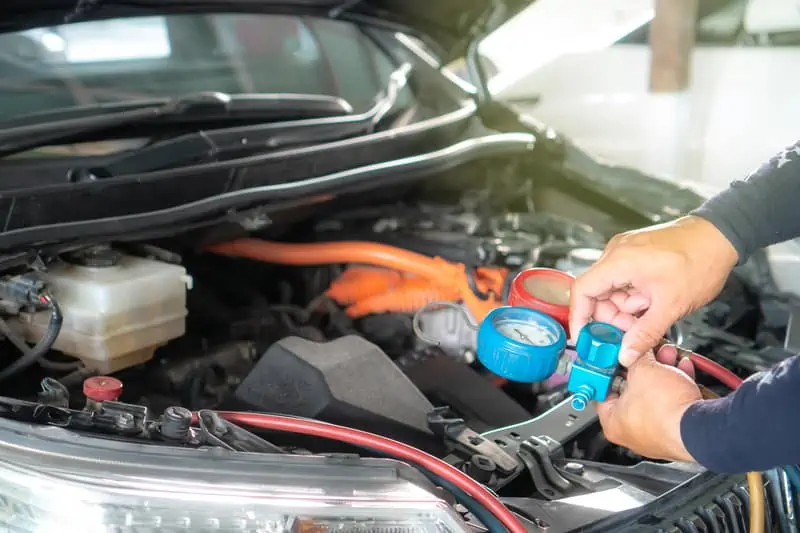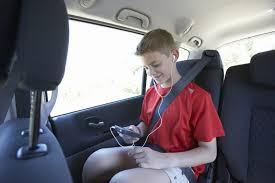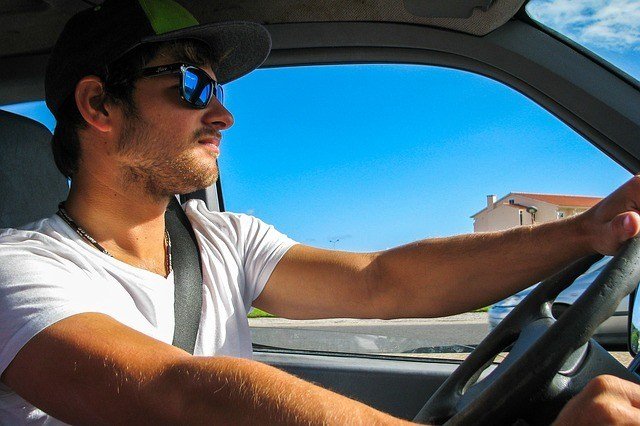Extreme summer heat doesn’t just make driving uncomfortable—it can also put serious strain on your vehicle and increase the risk of breakdowns, blowouts, and other road hazards. At Kunes, we’re committed to helping you stay safe and prepared with these practical driving in extreme heat tips. These summer driving tips will help you stay safe and keep your vehicle in top condition during the hottest months.
Whether you’re planning a road trip or just commuting on a sweltering day, here’s how to protect both yourself and your vehicle from hot weather risks.
Check Your Cooling System Before You Hit the Road
Your engine’s cooling system works overtime in hot temperatures. To prevent car overheating in summer, make sure your coolant levels are full and that your radiator, hoses, and water pump are all in good shape.
- Get a coolant flush if it’s been more than two years
- Look for leaks or cracks in radiator hoses
- Ensure fans and belts are working properly
- Use a 50/50 mix of antifreeze and water for optimal performance
Additionally, ensure your air conditioning system is functioning properly to maintain a cool interior during hot summer days.
A quick summer vehicle maintenance check can go a long way in avoiding roadside trouble.
Monitor Tire Pressure Frequently
Tires are especially vulnerable in high heat. As temperatures rise, so does your tire pressure—which can lead to dangerous blowouts.
- Check tire pressure when tires are cold (first thing in the morning)
- Keep pressure at the manufacturer’s recommended PSI
- Inspect for bulges, cracks, or uneven wear
- Don’t forget to check your spare tire
Tire safety in summer heat is critical, especially during long drives or fully loaded trips.

Test and Use Your Air Conditioning System Smartly
A working air conditioning system is more than a comfort—it’s a key part of heat safety for drivers. Before the heatwave hits, make sure your AC is in top shape.
- Check AC performance and refrigerant levels
- Replace your cabin air filter for cleaner airflow
- Use the “recirculate” setting to cool the cabin faster
- Start the fan before turning on full AC to push hot air out
Need help? Our team can inspect and service your AC system to keep you cool on the road.
Create a Summer Emergency Kit
If your car breaks down in extreme heat, having the right supplies can be lifesaving. Include these in your car emergency kit for summer:
- Bottled water for all passengers
- Sunscreen and a hat
- Phone charger and battery pack
- Reflective sunshade or umbrella
- Emergency roadside flares or triangles
- Snacks and a basic first aid kit
Planning ahead ensures you stay safe, even in the worst-case scenario.
Avoid Peak Heat Travel When Possible
Driving tips for heatwaves include choosing your travel times wisely. Midday sun is the harshest, so:
- Travel early in the morning or late in the evening
- Take frequent breaks in shaded or air-conditioned areas
- Never leave pets or passengers in a parked car
Even short stops can become dangerous quickly in extreme temperatures.

Protect Your Car from Heat Damage
Prolonged exposure to sunlight can harm your vehicle’s interior and exterior. Here’s how to protect your car from heat damage:
- Use windshield sunshades and dash covers
- Park in the shade or a covered garage
- Apply UV protectant to dashboards and leather seats
- Consider window tinting for long-term UV defense
These steps help preserve your car’s value and comfort.
Know the Signs of Heat-Related Car Trouble
Stay alert to early warning signs of extreme heat vehicle safety issues:
- Engine temp gauge rising above normal
- Steam or unusual smells under the hood
- AC blowing warm air
- Sluggish battery response (heat can affect battery life too)
At the first sign of trouble, pull over safely and contact roadside assistance or your local Kunes service center.
Stay Alert and Avoid Risky Behaviors
Staying alert and avoiding risky behaviors is crucial for safe summer driving. Fatigue can be a major factor in accidents, especially during long road trips. Here are some tips to help you stay focused and safe on the road:
- Take Regular Breaks: Rest and stretch your legs every couple of hours. If possible, switch drivers to avoid fatigue.
- Avoid Distractions: Keep your eyes on the road and avoid using your phone or eating while driving.
- Stay Aware: Be mindful of your surroundings at all times. Watch for other drivers, pedestrians, and potential hazards.
- Avoid Driving When Tired: If you’re feeling drowsy, pull over and rest. Never drive under the influence of medication or alcohol.
- Use Safety Features: Utilize cruise control and other safety features to help maintain focus.
- Defensive Driving: Consider taking a defensive driving course to learn techniques for avoiding potential hazards.
By staying alert and avoiding risky behaviors, you can significantly reduce the risk of accidents and ensure a safer journey.

Protect Your Passengers with Car Seats and Seat Belts
Car seats and seat belts are essential for protecting passengers, especially children. Here’s how to ensure everyone in your vehicle is safe:
- Buckle Up: Make sure all passengers are wearing seat belts, including children in car seats or booster seats.
- Follow Manufacturer Guidelines: Check the vehicle owner’s manual for specific recommendations on car seat installation and use.
- Secure Car Seats Properly: Ensure car seats are installed correctly and securely fastened.
- Use Appropriate Seats: Use a car seat or booster seat for children under 4’9” or 8 years old.
- Never Leave Children or Pets Alone: Temperatures inside a car can reach up to 120 degrees quickly, posing a risk of heatstroke.
- Monitor Temperatures: Consider investing in a car seat with a built-in thermometer to keep track of the temperature inside the car.
By following these tips, you can protect your passengers and ensure a safer ride for everyone.
Plan Your Route and Check for Recalls
Planning your route in advance can help you avoid traffic and construction delays, making your journey smoother and safer. Here’s how to prepare:
- Check for Road Closures: Look for road closures and construction before embarking on your trip.
- Use GPS or Mapping Apps: Get real-time traffic updates and find the most efficient route.
- Follow Maintenance Recommendations: Check your vehicle’s owner’s manual for specific recommendations on tire pressure and maintenance.
- Monitor Tire Pressure: Use a tire pressure gauge to ensure your tires are properly inflated.
- Check for Recalls: Visit the NHTSA website and enter your vehicle identification number (VIN) to check for recalls.
- Consider Auto Insurance: Purchase auto insurance that covers roadside assistance and emergency services.
- Keep an Emergency Kit: Include items like a spare tire, jumper cables, and a first aid kit in your car.
By planning your route and staying on top of vehicle maintenance, you can avoid potential issues and ensure a safer, more efficient trip.
Stay Cool, Stay Safe: Kunes Summer Driving Safety Tips
With proper preparation, summer driving safety is manageable—even in extreme conditions. From hot weather car care to real-time road trip advice, Kunes is here to help. Always consult your vehicle owner's manual for specific recommendations on maintaining your cooling system and other essential components.
Before your next summer drive, schedule a full vehicle inspection with your nearest Kunes Service Center. We’ll check your AC, tires, battery, fluids, and more—so you can hit the road with confidence.



